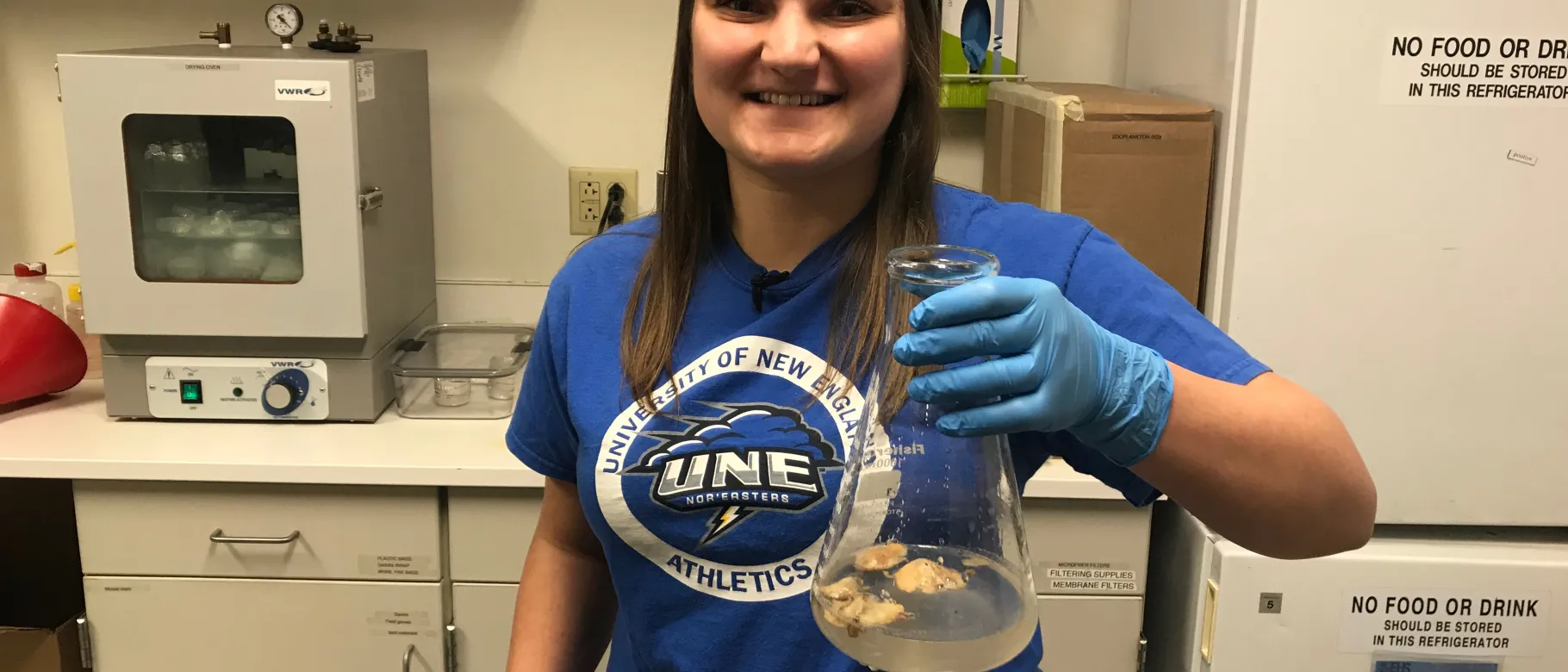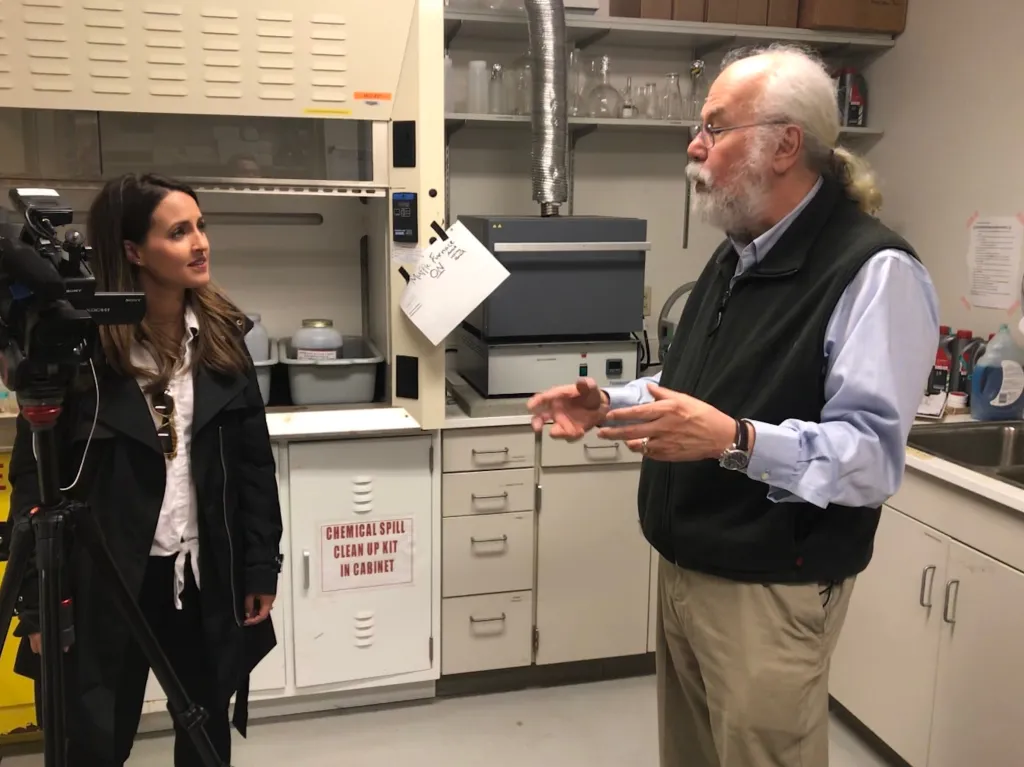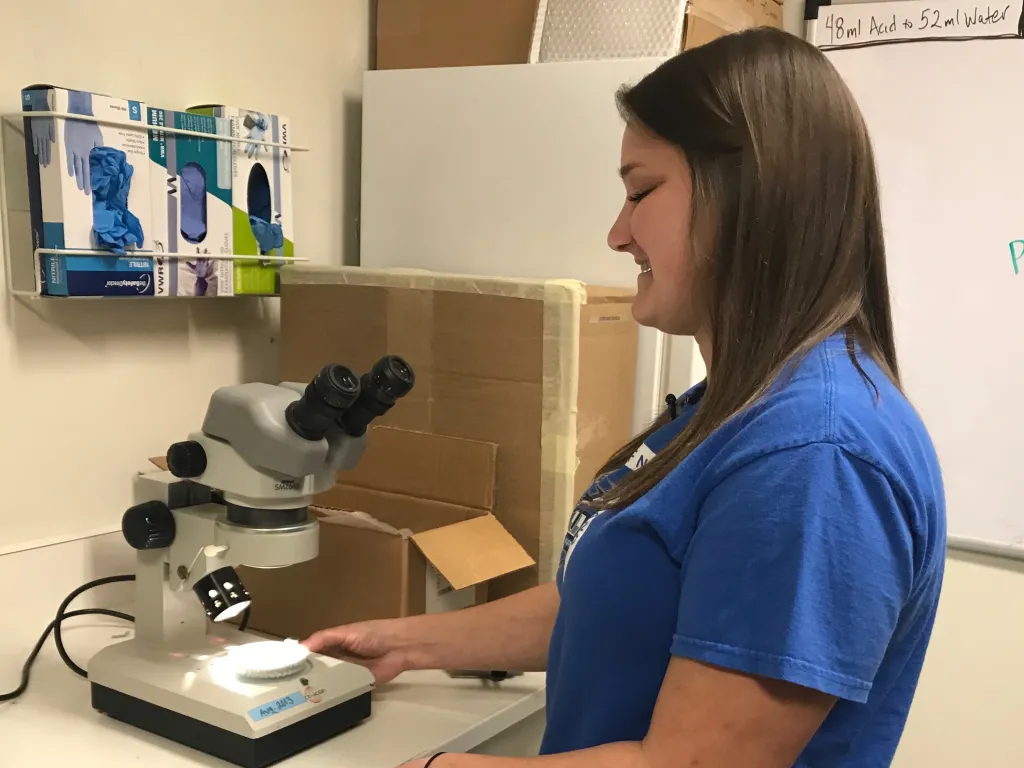School of Marine Programs faculty and students confront the problem of ocean microplastics

Plastic plays a large role in our daily lives. It is in our toothbrushes, clothing, food packaging, single use shopping bags and more.
"It is really everywhere around us," Susan Farady, J.D., assistant professor in the Department of Marine Programs, told WCSH. “I have a daughter, and I’m worried about the world she’s going to inherit.”
Farady recently published an article calling for more research on microplastic pollution in Marine Policy, a leading international journal of ocean policy studies.
Microplastics are a new, permanent pollutant found in the ocean. They are created when plastic breaks down over time, and can be invisible to the naked eye.
“It never ever goes away,” Farady explained. “It just breaks down into smaller and smaller pieces. If we stopped using every piece of plastic today, we would still have a huge problem of microplastics in the ocean.”
Microplastics can transport toxic contaminants. There is now evidence that microplastics are showing up in the seafood we eat.
Stephen Zeeman, Ph.D., professor in the Department of Marine Programs, has several students working on research projects involving microplastics.
"We all like to solve problems,” Zeeman explained to WCSH. “Some are very big problems, and this one is huge. Plastics are a problem globally."
Zeeman’s students are studying microplastics in the fresh waters of Sebago Lake and the ocean waters off the Southern Maine coast.
“They’re putting all the pieces together, from the distribution of microplastics in freshwater, to the ocean, trying to identifying what kinds of plastics are more common than others,” he stated. “This is a way to get at an important piece of what we have to look at.”
Emily Hanson (Marine Biology, ’19) is doing research to identify pieces of microplastics found in bivalve shellfish, particularly blue mussels.
"They all definitely had plastics,” Hanson told WCSH. “There wasn't one that didn't have any.”
Zeeman and Farady say there are many unanswered questions about the impacts of microplastics, and the need for more research is urgent.
"Does ingestion of a lot of small plastics have a negative impact on health?” Farady questioned.” Whether it's the health of wildlife or the health of humans. There's a lot we don't know."


